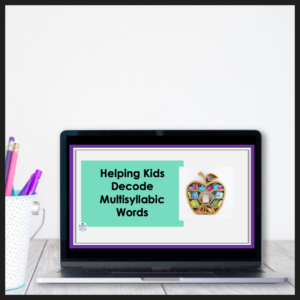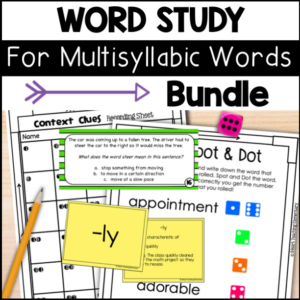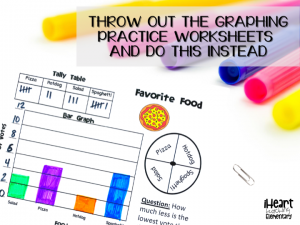It’s hard when your child is struggling to read at an age where they’re supposed to already be fluent readers. And you have no idea how to help them at home. If your child is struggling to read, one big factor is being unable to read multisyllabic words.
A multisyllabic word is a word with more than one syllable. As kids get into the upper grades of elementary school, they will need to read longer words. In this post, I’m sharing the three things your child needs to successfully read multisyllabic words.
Syllable Types
The first thing kids who are struggling to read need in order to be able to read multisyllabic words, is to identify syllable types.
A syllable is a unit of speech organized around a vowel sound. It’s impossible to say a syllable without saying a vowel. Knowing the different syllable types helps kids understand what sound the vowels make in each syllable.

This is important when breaking up longer words because you break up the words into syllables and then sound out each syllable according to the syllable rules.
There are six syllable types and I go into more depth about each syllable type in this blog post.
The syllable type that occurs most often when reading is the closed syllable. That is the syllable you want to start with when helping your child become a better reader.
The word magnet, for example, has two closed syllables: mag-net. The first syllable mag has the vowel a followed by the consonant g. This makes it a closed syllable. The second syllable has the vowel e followed by the consonant t.
Because both syllables are closed, the vowels make a short sound.
You can help your child identify the closed syllable in two-syllable words and then as they get better you can have them try it in three, four, and five-syllable words.

Using Syllabication to Break Up Multisyllabic Words
Once your child understands the six syllable types, they can then work on breaking up words that have a variety of syllables.
To break up a longer word that has multiple syllables, your child will first identify what the syllables are. Then they’ll use their syllable knowledge to read each syllable and blend them.
For example, to read the first syllable in the word chal-lenge, first identify that it is a closed syllable. This means that the a makes a short /a/ sound.

There are also other things that go into breaking up a multisyllabic word like odd syllables that don’t have a common sound or the schwa sound that some vowels make.
Many multisyllabic words also have prefixes and suffixes. Being able to identify the most common prefixes and suffixes is an important part of breaking up a multisyllabic word.
Lots of Practice
The third thing your child that is struggling to read needs is lots of practice. Understanding and identifying syllable types and decoding multisyllabic words is something that will take time and daily practice.
It doesn’t have to be a boring task that you struggle to get your child to do. You can make it fun by creating games and activities for practice.

The more practice your child does, the more automaticity your child is going to have when reading multisyllabic words. Reading words accurately will increase their fluency which will improve their reading comprehension.
You Can Help Your Child That is Struggling To Read
Everything in this post can seem very overwhelming and confusing especially if you’ve never taught a child to read multisyllabic words.
If you want some help with teaching your child how to read longer words, I have a video workshop that’s for both teachers and parents: Helping Kids Decode Multisyllabic Words.
Click here to learn more about the workshop. If you’re just looking for activities to help your child practice, check out this bundle of word study activities for multisyllabic words.
Check out the resources highlighted:
Helping Kids Decode Multisyllabic Words Workshop
Multisyllabic Words Word Study Bundle
📌 Pin this Post to Save for Later






